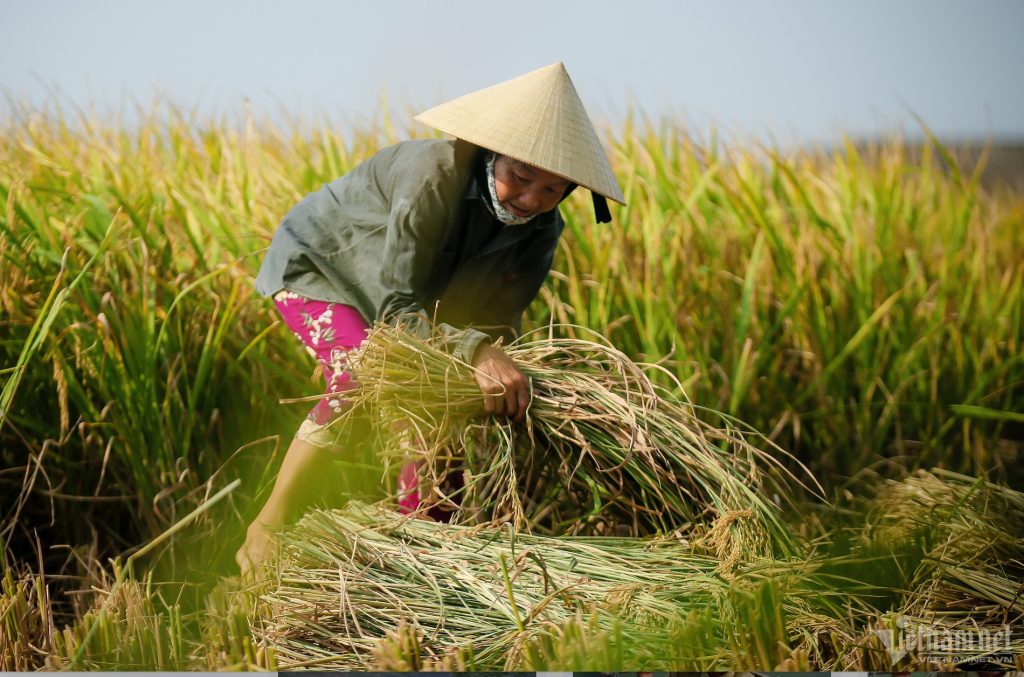Tags
Vietnam’s rice industry soars to $5.7 billion, redefining its global reputation.
Vietnam’s rice industry has gone beyond quantity, focusing on quality and sustainability. The shift has brought higher prices, international recognition, and greater income for farmers, marking a historic year for the sector.

Vietnam’s rice exports reached a record $5.7 billion in 2024, an achievement that goes beyond numbers. More than just selling at high prices, Vietnamese rice has changed how the world perceives it, shifting from a low-cost staple to a premium agricultural product.
This transformation is reflected in the way younger generations see rice today, much like the fresh energy of the song Rock Hat Gao (Rice Grain Rock).
From scarcity to a global powerhouse
Vietnam, once a country struggling to feed itself, first exported 1.4 million tons of rice in 1989, earning $322 million. By 1990, the nation crossed the $1 billion export milestone with 4.6 million tons, solidifying its place as a global rice exporter.
Since then, Vietnam’s rice exports have steadily grown, surpassing $2 billion, $3 billion, and $4 billion, before reaching the historic $5.7 billion mark in 2024.
Vietnam now ranks as the third-largest rice exporter in the world, behind India (17 million tons) and Thailand (9.3 million tons).
The shift to high-value rice
For years, Vietnamese rice was associated with low prices and average quality. That perception has changed dramatically in the past two years.
During the recent global rice price surge, Vietnam’s average export price soared to $663 per ton, $100 higher than competitors. In some markets, prices reached astonishing levels:
- Brunei: $959 per ton
- United States: $868 per ton
- Netherlands: $857 per ton
- Ukraine: $847 per ton
- Iraq: $836 per ton
- Turkey: $831 per ton
Some companies even exported to Germany at $1,800 per ton and Japan at $1,200 per ton.
This shift was driven by advancements in rice breeding, leading to varieties that offer higher yields, shorter growing cycles (90-105 days), and superior quality.
Vietnam’s premium rice varieties, such as OM 5451, ST25, and Dai Thom 8, have gained global recognition, even influencing farmers in Cambodia and Thailand, who are now planting Vietnamese strains for better profitability.
Vietnamese rice in high-end markets
Vietnamese rice is no longer just for developing countries. It is now competing in high-end markets such as Japan, South Korea, the U.S., and Europe.
The “Vietnam Rice” brand is proudly displayed in major supermarkets worldwide, and Vietnamese rice has been honored among the world’s best.
In 2019 and 2023, ST25 rice was crowned the world’s best rice, outperforming competitors from 10 major rice-producing countries.
Quality, sustainability, and a greener future
In early 2025, Vietnam’s Minister of Agriculture and Rural Development Le Minh Hoan played the song Rock Hat Gao during an interview. The modern, energetic melody reflects a new way of thinking about rice:
“Lên thân xong rồi lên hoa / Hạt gạo nuôi bao nhiêu anh em dần khôn lớn”
“Nên thân xong rồi nên hoa / Người Việt thêu nên gấm hoa…”
(Growing strong, then blooming / The grain of rice nourishes many brothers as they grow up.
Matured and blossomed / The Vietnamese people weave a tapestry of silk and flowers…)
Unlike traditional folk songs about rice farming, Rock Hat Gao represents a bold, innovative mindset – one that sees rice not just as a basic crop but as a high-value product with multiple possibilities.
Vietnam is now the first country in the world to produce high-quality, low-emission rice on a large scale, with a 1 million-hectare program focused on sustainability and green growth.
This initiative, supported by the Carbon Transition Fund, has secured $33.3 million in funding, with potential expansion to $40 million. Some farmers are already earning $20 per ton of carbon reduction, adding a new revenue stream to their rice production.
The future of Vietnam’s rice industry
Beyond carbon credits, the economic potential of sustainable rice farming is vast. Rice straw can be turned into pellets and fertilizers, reducing production costs while increasing profits.
Vietnam is also exploring new value-added rice products, including food, cosmetics, and organic fertilizers. Even rice fields themselves – from vast plains to breathtaking terraced landscapes – are becoming tourist attractions, providing farmers with additional income.
As Minister Le Minh Hoan emphasized, adapting to change is crucial for integration into global markets.
“To compete internationally, we must first build a strong foundation, refine our unique strengths, and appreciate the simple yet valuable things around us. When we see rice differently, farmers’ incomes will change as well.”
Vietnam’s rice industry has not just grown – it has transformed, proving that even the smallest grain can hold immense value.
Tam An
https://vietnamnet.vn/en/vietnam-s-rice-industry-soars-to-5-7-billion-redefining-its-global-reputation-2368289.htmlPublished Date: February 13, 2025






